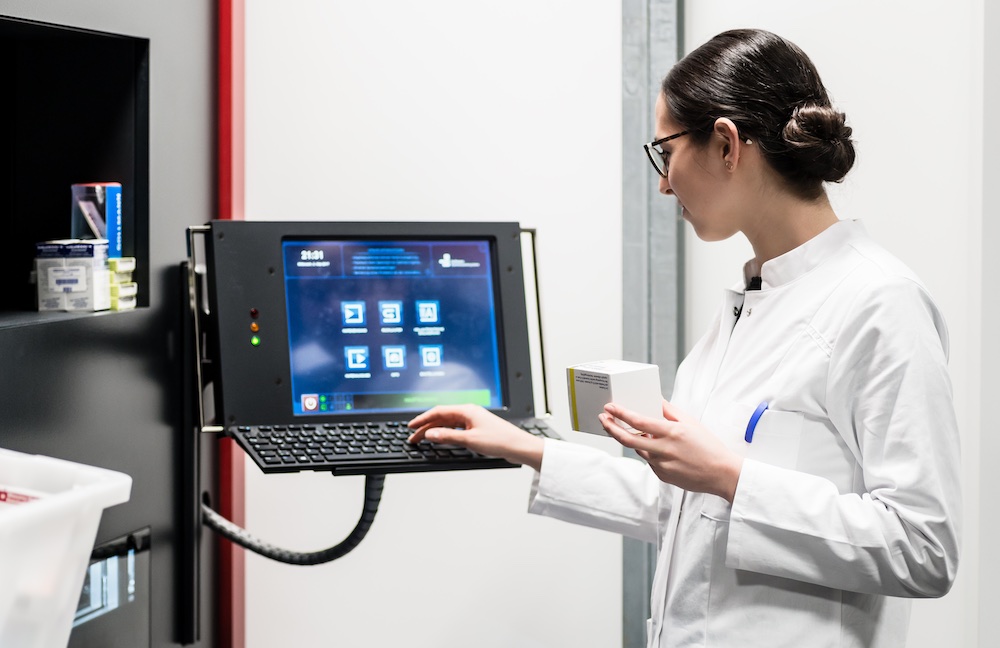Uses of Inventory Control Systems for Healthcare Simulation
Inventory Control Systems are used in a multitude of industries to track assets in real-time, a tool that could be extremely beneficial to those operating clinical simulation programs. Successful management of a Healthcare Simulation program requires a constant review of inventory levels, including examples such as medical supplies, simulator equipment, moulage makeup materials, task trainer skins, and more. HealthySimulation.com’s last article on Inventory Control Systems, “How Inventory Control Systems Benefit Healthcare Simulation Programs,” discussed the ways that an Inventory Control System, or ICS, can benefit Healthcare Simulation Programs to be run more efficiently. This HealthySimulation.com article looks at some examples of Inventory Control Systems designed for use in medical simulation (or asset management) and how they can help keep a simulation center running smoothly.
To maximize effectiveness in the selection of an Inventory Control System, simulation champions are encouraged to survey stakeholders and perform a needs assessment. Usually, the most common feature is to track the use of consumable medical supplies used in an educational way, such as NG-tube insertion packs, wound care packs, suture kits, etc. However, contemporary cloud-based Inventory Control Systems can support healthcare simulation programs with abilities to track simulator usage hours, Standardized Patient management (or Simulated Patients)including payroll data, automatic inventory supply replenishment, and equipment rental reservations for faculty or students.
Depending on what software is utilized at the medical simulation center there may be a solution to the inventory challenges through the healthcare simulation audiovisual debriefing or Learning Management System, from companies like CAE Healthcare or Education Management Solutions. For example, with those systems, users are able to tag inventory items with a barcode scanner, track usage hours of simulators, review consumable supply levels in real time, and even manage warranties and in-service repair timelines.
Sponsored Content:
The key benefit of using pre-existing simulation software such as ICS is that such tools might already be readily available for immediate implementation at no additional cost to the simulation center. Both CAE and EMS offer in-person and online training to help simulation programs better understand how to use these specialized systems to also work as inventory management tools.
Tips for Use of an Inventory Control System in Medical Simulation
A key suggestion would be to start slowly into the world of inventory management and create a stable foundation that can be built upon. Beginning tagging the various consumable materials that are most often used in medical scenarios can give an idea of how the software works. Once those materials are in the system, it is possible to try to automate certain things inside the software that will make the job of inventory management easier.
To get started, simulation operational specialists should program in and itemize supplies within the ICS that are used most frequently by learners. Not only will this provide the operational specialist with experience on how to utilize the ICS, but also quickly begin to demonstrate the rate of use for specific consumables. Furthering this use case, operationalists can create groups of items that are always used in conjunction with specific clinical skills lessons, reducing the need to remember each and every item or consumable associated with such training.
Sponsored Content:
An example of presetting an inventory management system would be around a particular clinical skills training, such as a blood draw. In such an instance, creating a preset that includes all the materials necessary for that blood draw training (IV arm, blood tubes, alcohol swabs, venipuncture needles, etc), will quickly enable an operationalist to automatically list locations of necessary components with a single click.
At this point, the operational specialist just needs to input how many learners or stations were set up and the software can automatically subtract all of the necessary consumables from the live inventory. If a specific item is running low, an automatic alert can be sent from the ICS to the person responsible for replenishing that inventory.
An ICS can also be used to track task trainer use limitations (like a predefined number of sticks to an IV arm), and necessary maintenance schedules based on use or calendar dates, and may even be able to directly communicate with vendors for automatic restocking, maintenance, and warranty repairs.
Inventory Control System Considerations
Simulationists looking for robust inventory control systems that are not tied to audiovisual debriefing systems should explore commercially available inventory control systems such as those listed below:
- Fishbowl Inventory: Fishbowl gives visibility into all inventory, at any time, no matter where it is. Track items most important to a business including creation date, expiration date, lot number, revision, number, Serial Number Tag Number
- WASP: WASP is a barcode scanning company that specializes in the tagging and tracking of inventory using Android or iOS devices. WASP’s mission is to engineer barcode solutions that provide straightforward, error-free tracking methods that make doing business easier – for everyone.
- MyAssetTag: MyAssetTag is a pre-printed labeling company that creates metal inventory tags that are able to work with their own ICS or any other barcode-based platform. The metal tags allow for easy cleaning without fear of damage to the product or the tag being harmed.
- AssetPanda: AssetPanda specializes in multi-site inventory tracking through its cloud-based ICS.
Before investigating any external inventory systems, simulation champions should reach out to institutional purchasing departments to better understand if technologies and agreements are already in place with pre-existing vendors. Most professional healthcare settings already have inventory control systems to manage consumables and equipment at scale. The ability to utilize technologies already purchased can help simulation labs save both time and money.
Undoubtedly with regard to medical simulation operations, an ICS should be a benefit and not a burden. Such inventory management tools should simplify operations of busy simulation centers and allow for a wider perspective of item location, inventory levels, automated restocking, and utilization. When used properly an Inventory Control Management tool can help clinical educators improve operational efficiency and training outcomes.
Learn More About Inventory Control Systems
Wesley Lockhart, PhD.c, MSMS, CHSE, CHSOS – Wesley has been involved in medical simulation for almost two decades, having started his simulation career as a Standardized Patient throughout high school and college. His first position out of college while preparing for medical school was a simulation technician at UC Riverside, he fell in love with medical simulation and the impact it could have on future providers and their future patients. After deciding against medical school, Wesley pursued a graduate degree in Medical Simulation from Drexel University, received his CHSE and CHSOS from SSH, and is currently a PhD candidate at MGH-IHP. Currently, Wesley works as the Simulation Director at the newly established University of Texas Tyler School of Medicine after 8 years at UC Riverside. His interests in simulation focus on Artificial Intelligence, Virtual Reality, Mastery learning, Debriefing, and integrating simulation into established curricula. Wesley lives in East Texas with his wife Kristen, daughter Sophie, and 3 standard poodles. When not head down in a simulation scenario, Wesley enjoys video games, fantasy novels, escape rooms, and board games with friends.
Sponsored Content:




















